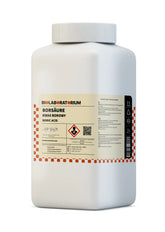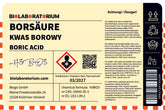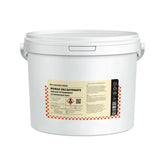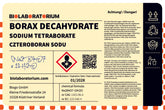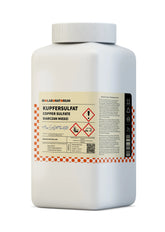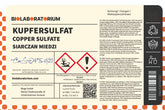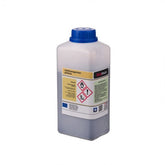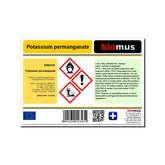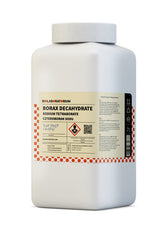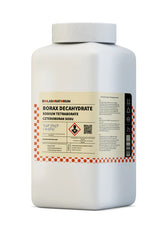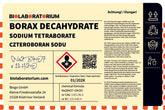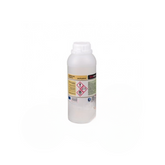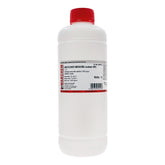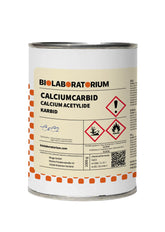The versatile applications of nitro: From painting to blasting technology
Nitro is a versatile chemical substance used in a variety of industries. Whether in the paint industry, explosives technology, or the production of plastics – nitro and its derivatives play an important role. In this blog post, we want to take a closer look at the properties, applications, and safety aspects of nitro.
The chemical properties of nitro
Nitro is a chemical compound consisting of nitrogen (N) and oxygen (O). The exact molecular formula is NO2. Nitro belongs to the group of nitro compounds and is characterized by its high reactivity.
Nitro is a strong oxidizing agent and can react violently with many organic substances. For this reason, great caution must always be exercised when handling nitro. The compound is highly flammable and can even be explosive under certain conditions.
Nitro is a colorless gas with a pungent odor. At room temperature, it exists in liquid form. The boiling point of nitro is 21.15 °C, the melting point is -11.2 °C. Nitro is well soluble in organic solvents such as alcohols, esters, or ketones.
Applications of nitro in industry
Due to its diverse properties, nitro is used in numerous industrial applications. Here are some of the most important areas of use:
Lacquers and paints
One of the main application areas of nitro is the paint industry. Nitro lacquers and paints are characterized by their fast drying, high durability, and good adhesion. Therefore, they are often used for coating wood, metal, or plastic.
Nitrocellulose, which serves as a binder in nitro lacquers, is produced by nitrating cellulose. Nitro lacquers can be found, for example, in automotive paints, furniture lacquers, or industrial coatings.
Explosives and fuels
Nitro is also an important component of many explosives and fuels. Nitroglycerin, nitrocellulose, and trinitrotoluene (TNT) are among the best-known nitro compounds in this field.
These substances are characterized by their high reactivity and energy density, making them powerful explosives. In explosives technology, Nitro compounds are used, for example, in mining, tunnel construction, or road construction.
Plastics and fibers
Nitrocellulose is also used in the production of plastics and fibers. It is used for the manufacture of cellulose nitrate lacquers, celluloid, and rayon.
Cellulose nitrate lacquers are characterized by their high hardness, transparency, and durability. Celluloid, in turn, was one of the first thermoplastic plastics and was formerly used for cameras, records, and jewelry.
Rayon is an artificial fiber derived from cellulose. Nitrocellulose serves here as the starting material for fiber production.
Further applications
In addition to the main applications mentioned, Nitro is also used in other industrial sectors. For example, it is used in the rubber industry as a vulcanization accelerator or in pharmaceuticals as an active pharmaceutical ingredient.
Safety aspects when handling Nitro
As already mentioned, Nitro is a potentially dangerous substance due to its high reactivity. Strict safety measures must therefore be observed when handling Nitro and Nitro compounds:
- Nitro is highly flammable and can even be explosive under certain conditions. Open flames, sparks, and high temperatures must therefore be strictly avoided.
- Nitro is a strong oxidizing agent and can react violently with many organic substances. Contact with flammable materials must therefore be strictly avoided.
- When handling Nitro, appropriate protective equipment such as gloves, safety goggles, and respiratory masks must always be worn.
- The storage of Nitro must take place in specially equipped, cool, and well-ventilated rooms.
- In the event of an accident or incident, the responsible authorities must be informed immediately.
Only by strictly adhering to all safety regulations can the risk when handling Nitro be minimized. Everyone working with this substance must be properly trained and sensitized.
Conclusion
Nitro is a versatile and powerful chemical substance used in numerous industrial sectors. From the paint industry to explosives technology and plastic manufacturing – Nitro and its derivatives are indispensable in modern industrial everyday life.
However, handling Nitro requires special safety measures due to its high reactivity and danger. Only through careful work and consistent compliance with all regulations can the risk of accidents and incidents be minimized.
Overall, it is evident that Nitro is an extremely useful but also potentially dangerous industrial chemical. Responsible and safe handling of this substance is therefore of crucial importance.

